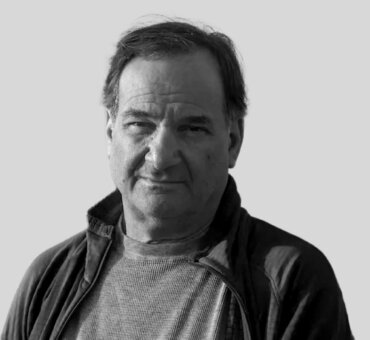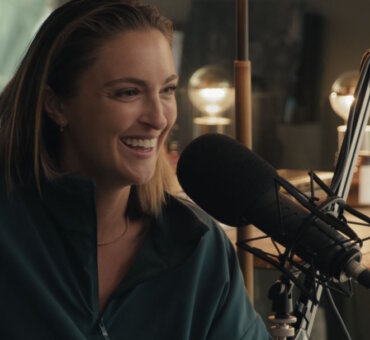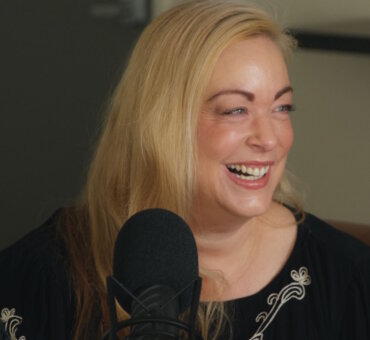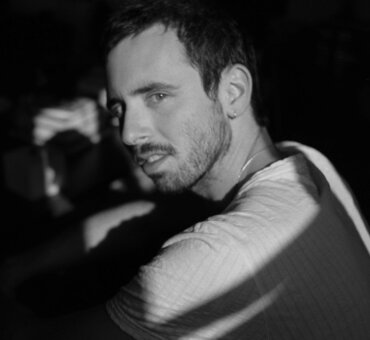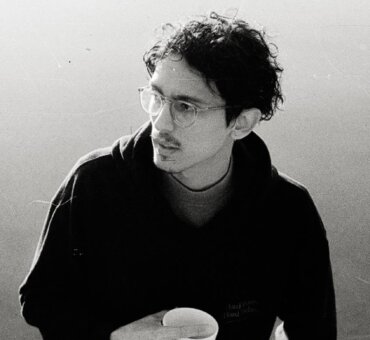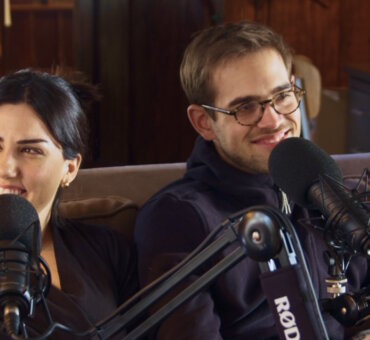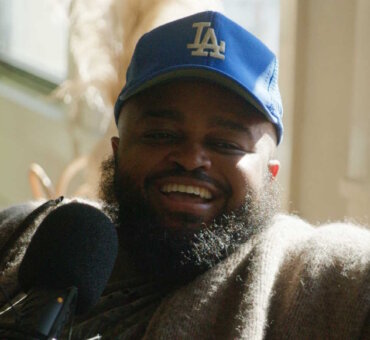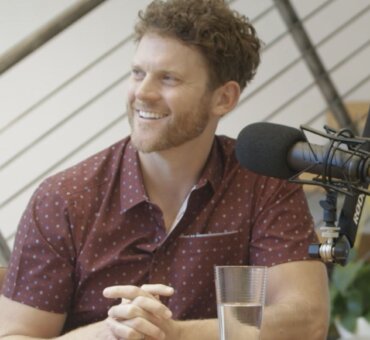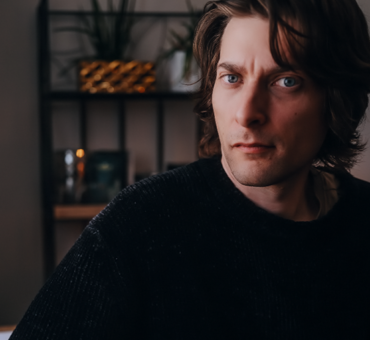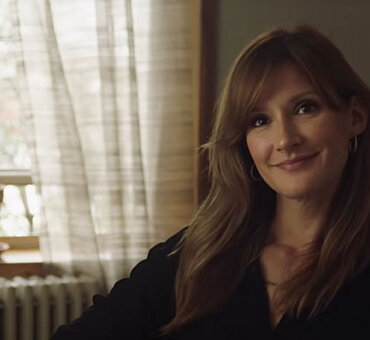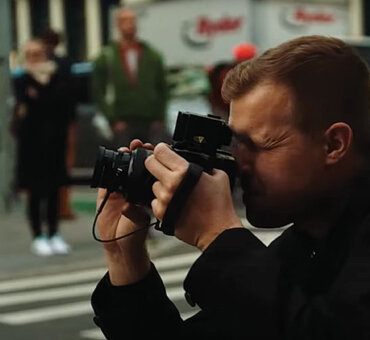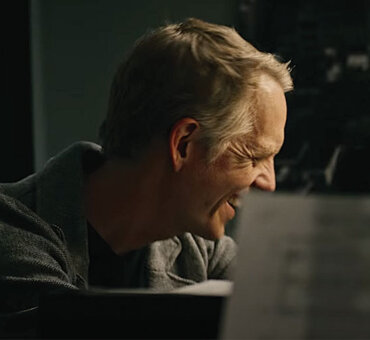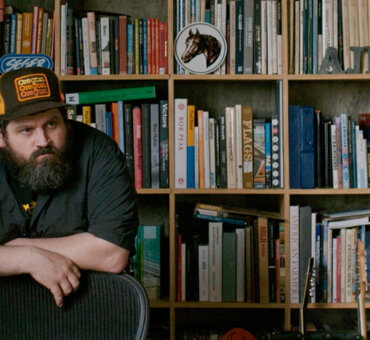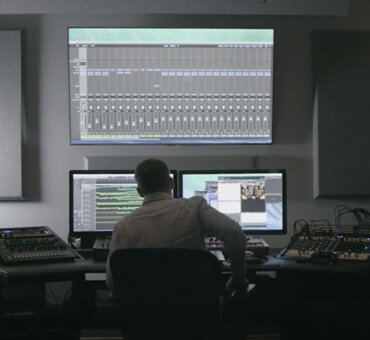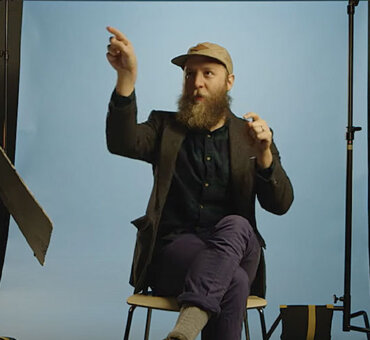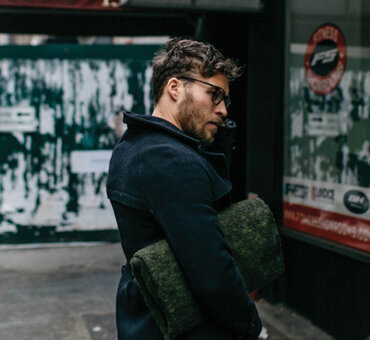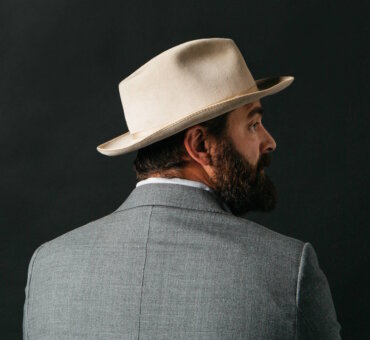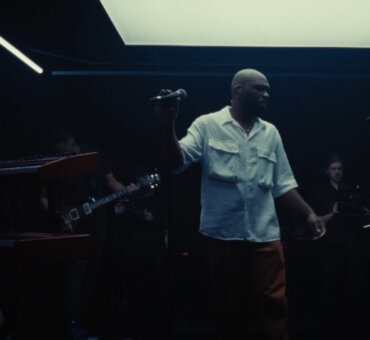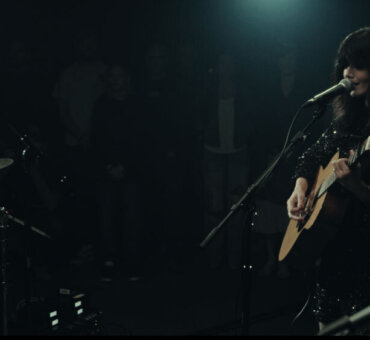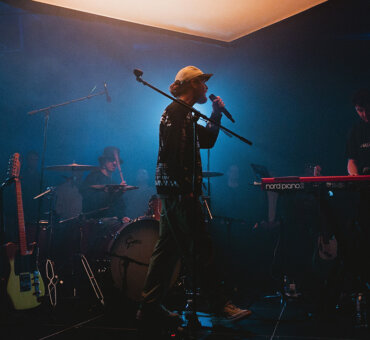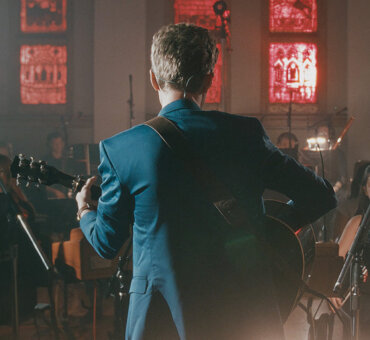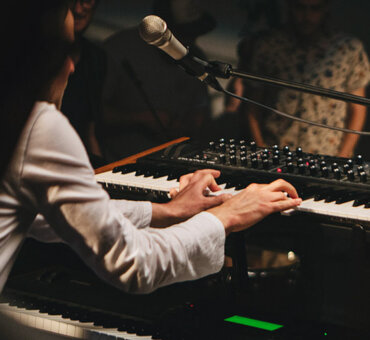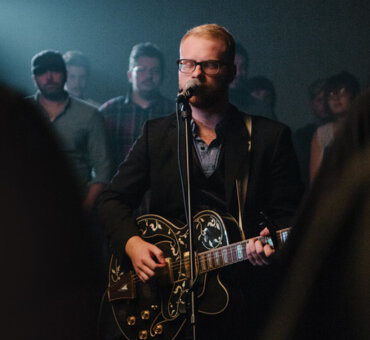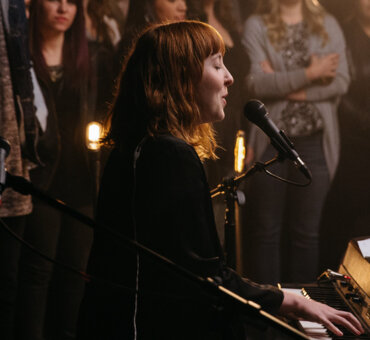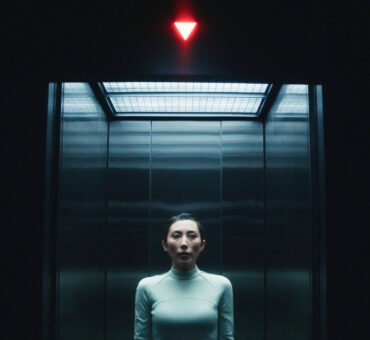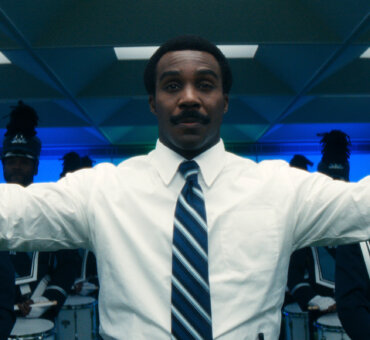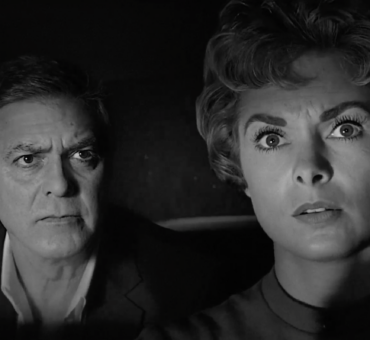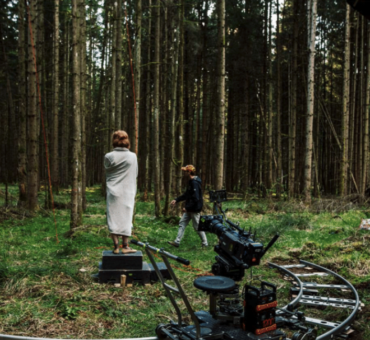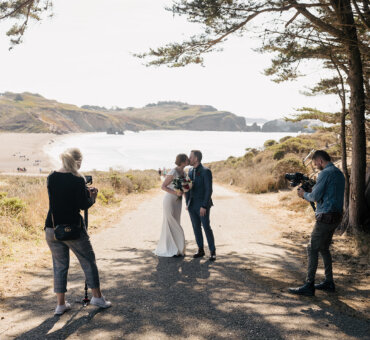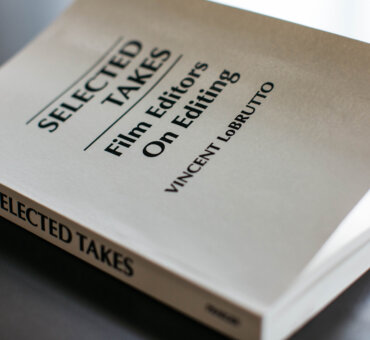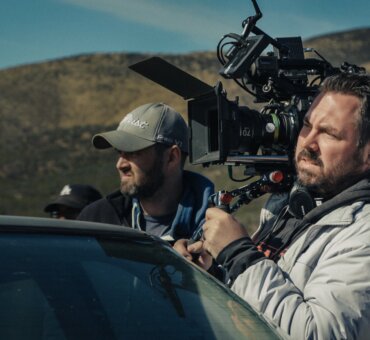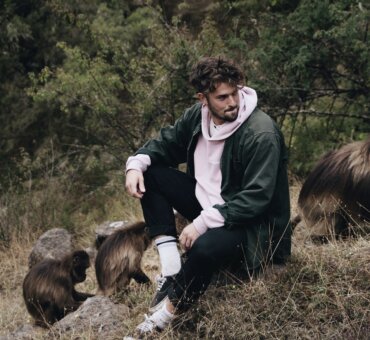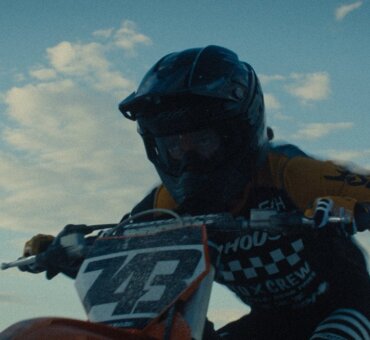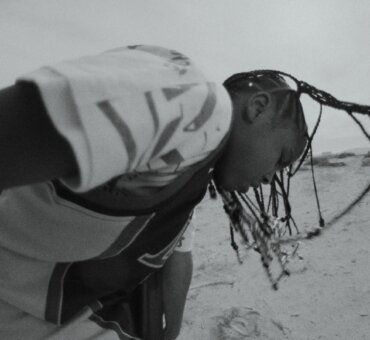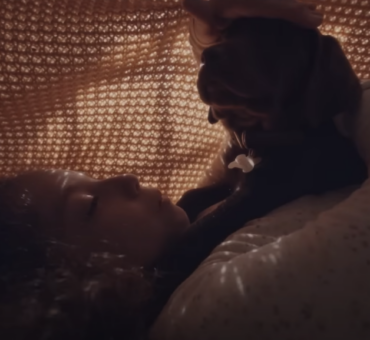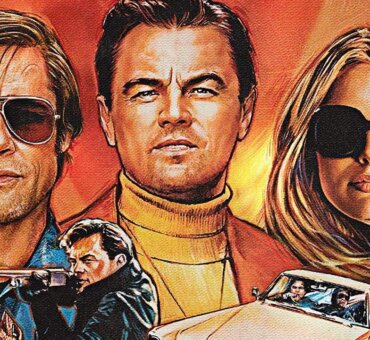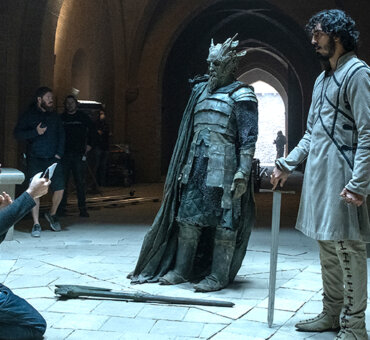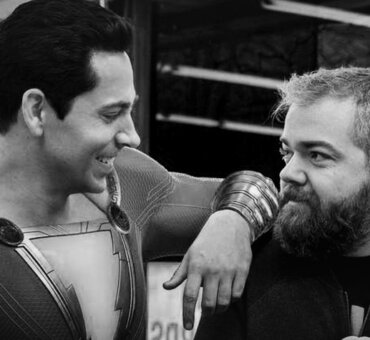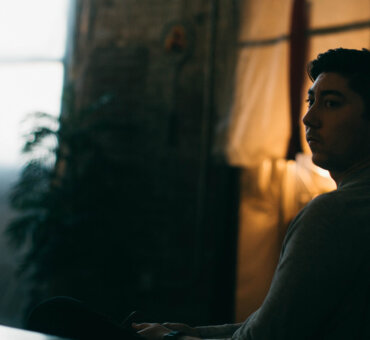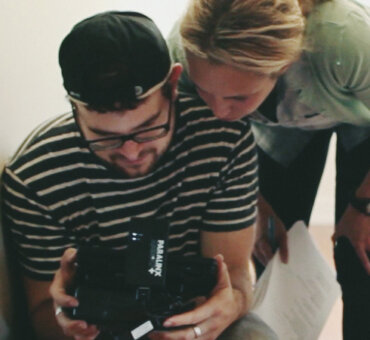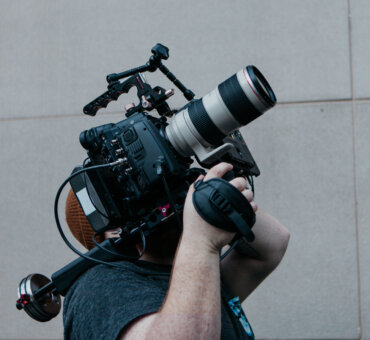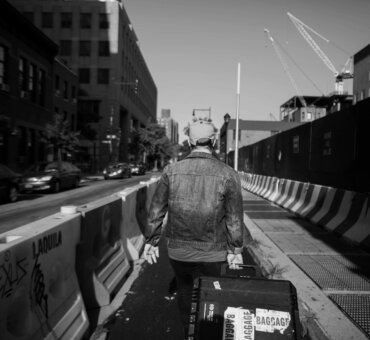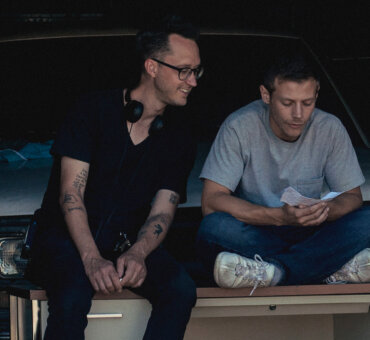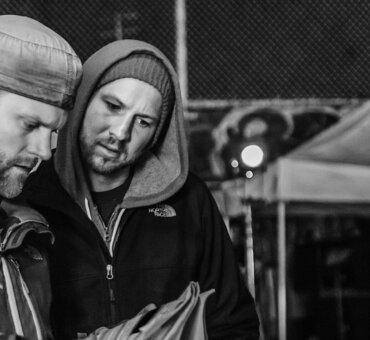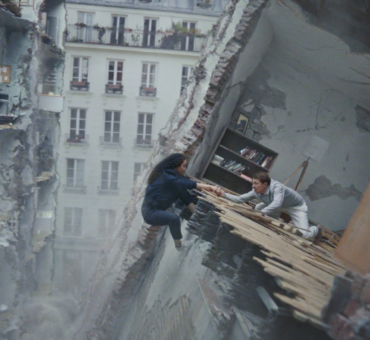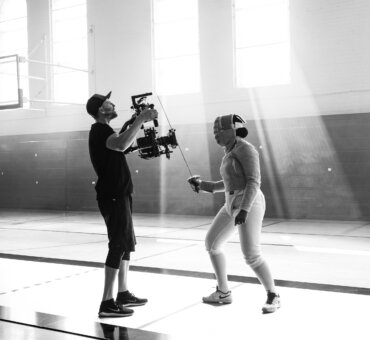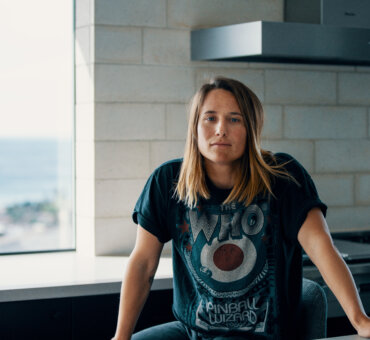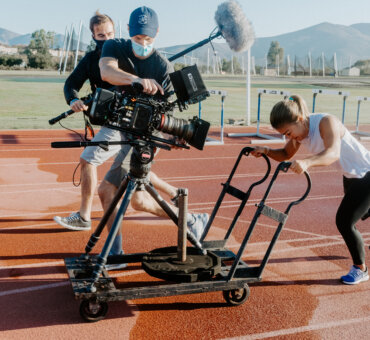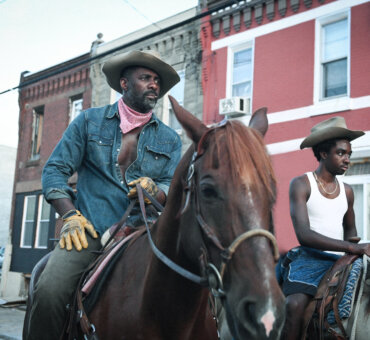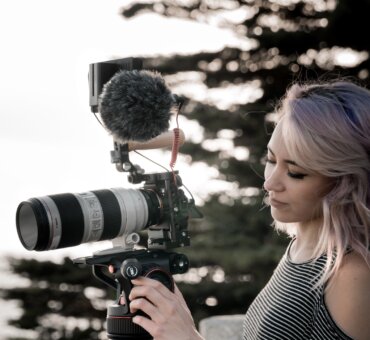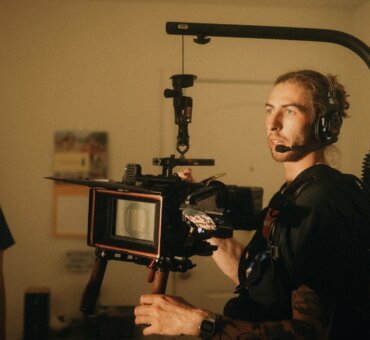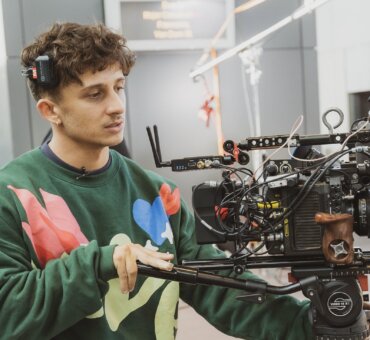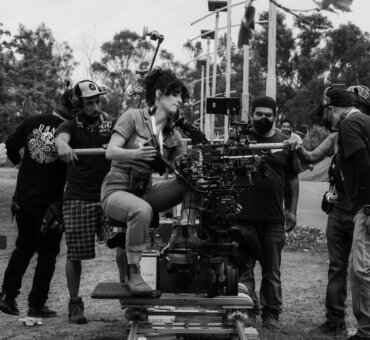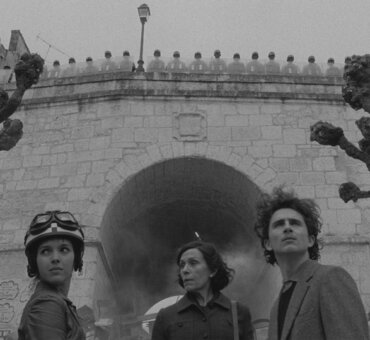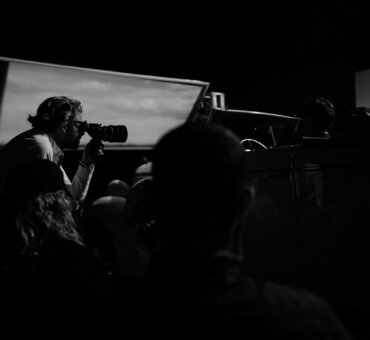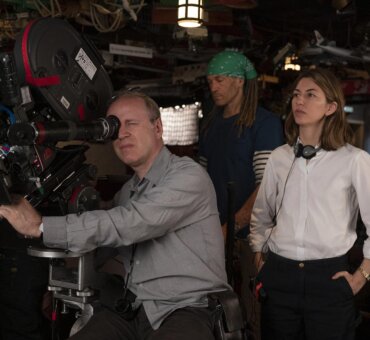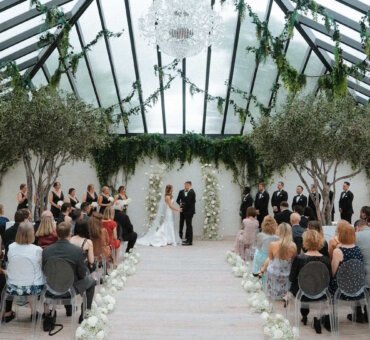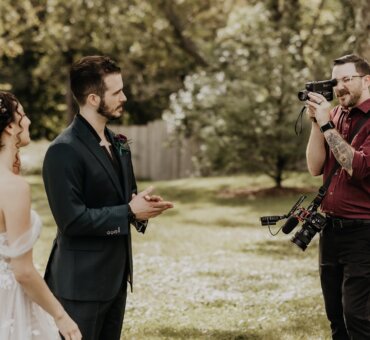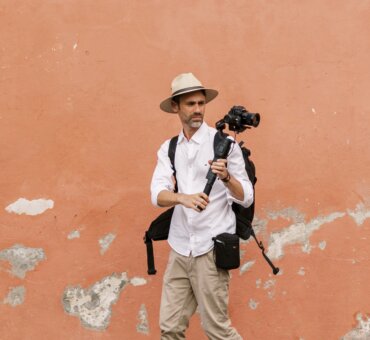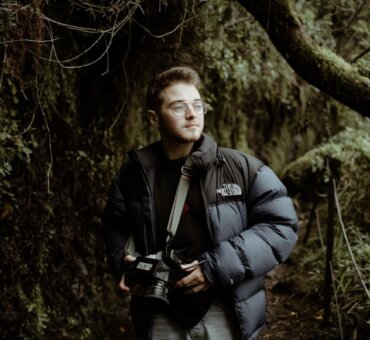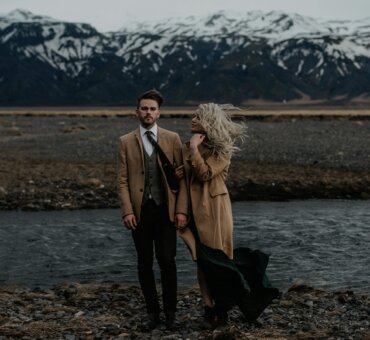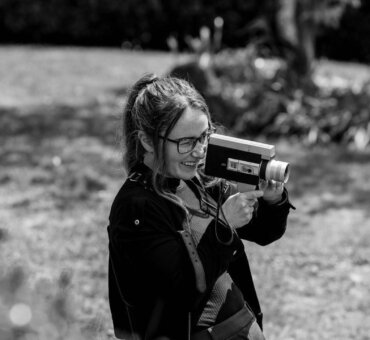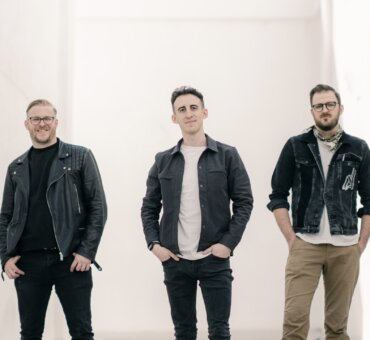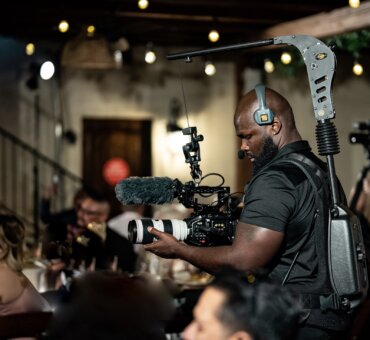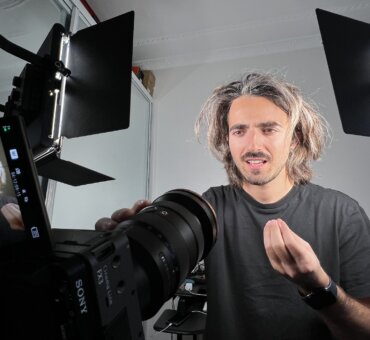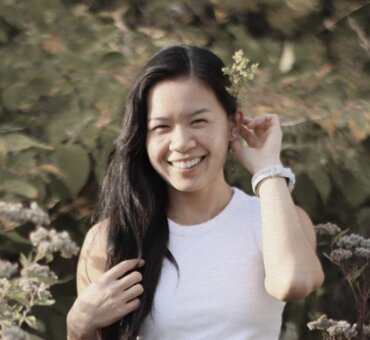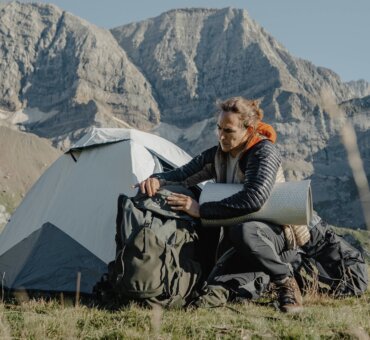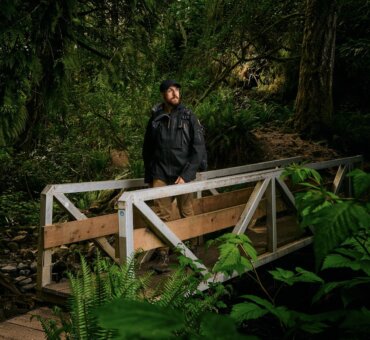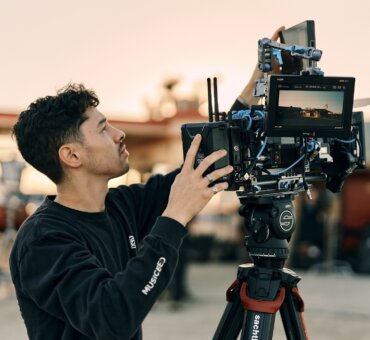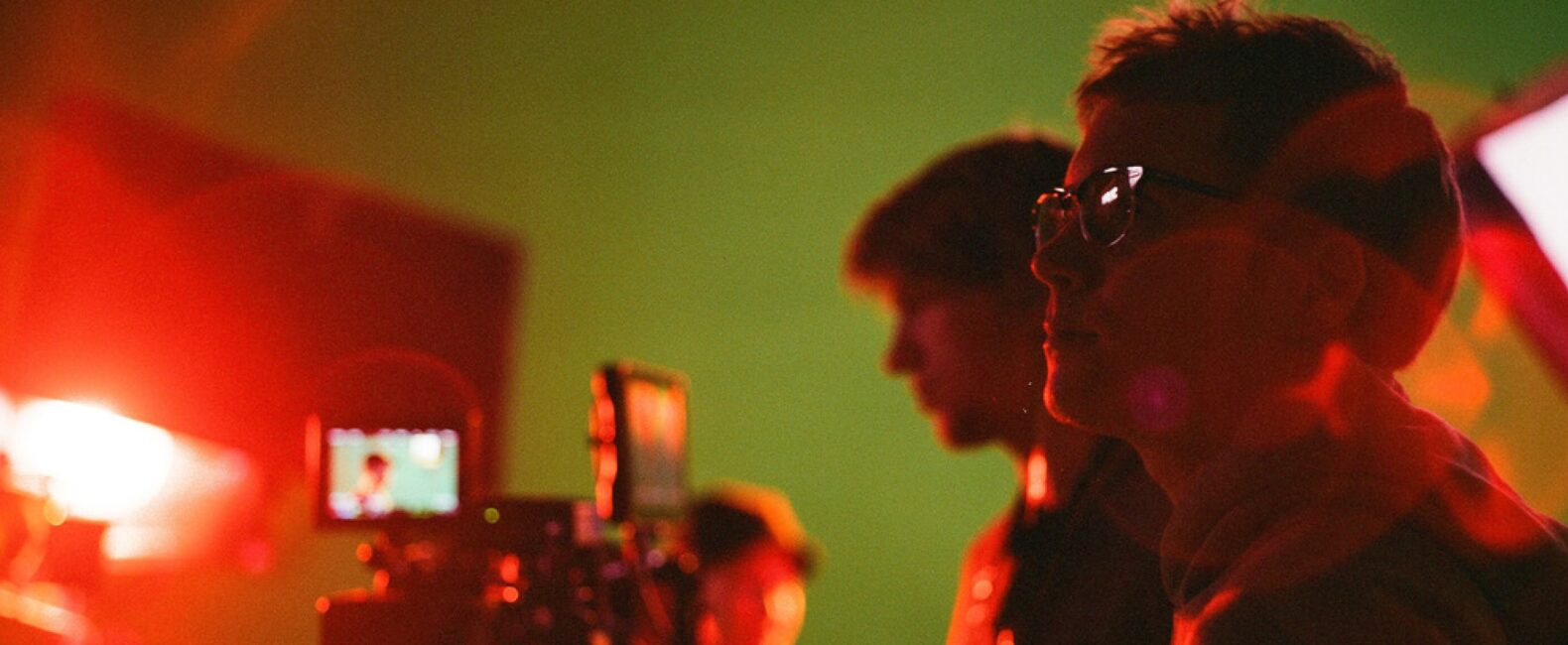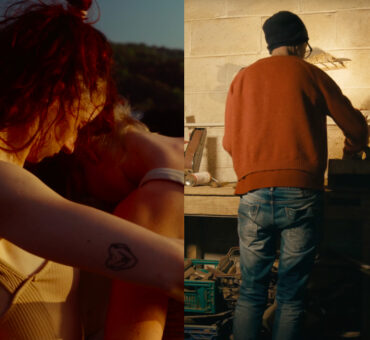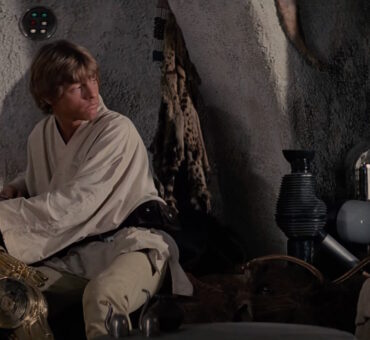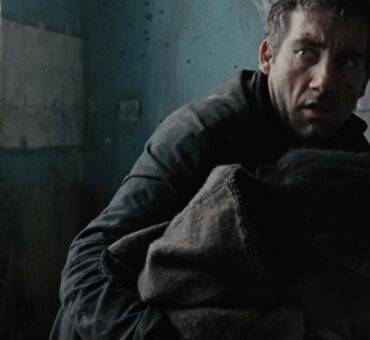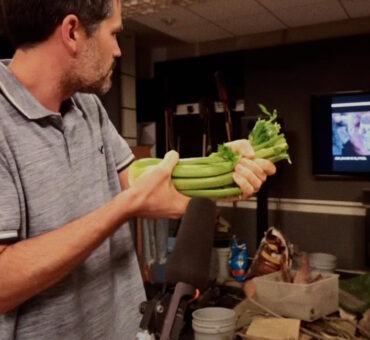For Al Benoit, filmmaking didn’t start with a camera—it started with a question. One his grandma asked after every movie they saw together:
“So, if the story kept going, what would happen next?”
That simple ritual of Sunday matinees and storytelling planted a seed that’s grown into a career defined by emotional depth, haunting visuals, and a deep respect for the power of music in film.
In this conversation, Al opens up about his music-selection process, the role of music in his work, and how he uses sound—and silence—to make stories linger long after the credits roll.
What sparked your interest in filmmaking?
Al Benoit: Honestly, I think my love for storytelling started because I was always a little more interested in the world of fiction than the real one. Not in a sad way—I just loved getting lost in it.
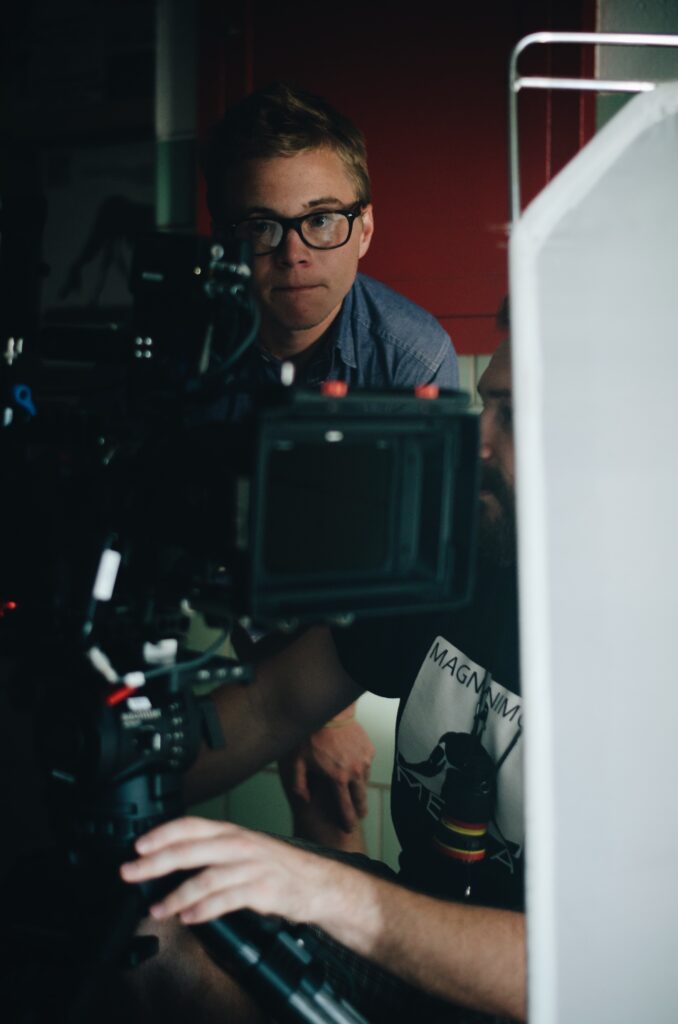
A big part of that came from my grandma. Every Sunday, we had this standing routine:
Lunch at a diner, feed the ducks at the pond with the bread she snuck into her purse, and then off to the movies.
We didn’t even pick films ahead of time—we just showed up and saw whatever was playing. So I was exposed to all kinds of stories: comedies, dramas, thrillers (and some stuff I definitely wasn’t old enough to see!).
But what really stuck with me happened after the movie.
On the drive home, my grandma would always ask, “So, if the story kept going, what would happen next?”
That was the deal: I had to come up with my own version of what happened after the credits rolled. And that simple question, asked over and over again, made me fall in love with the idea of continuing the story, or better yet, making my own.
As I got older, I became obsessed with horror movies. I’d go to this little mom-and-pop rental shop called Video Villa and purposely rent things that would completely ruin my sleep for the next few days. I was fascinated by the emotional power of a film—that a story could scare you, stay with you, change how you feel in your own house.
RELATED READS: How Brian Gonsar Crafts Emotionally Powerful Ads, Films & Music Videos
That’s when it really clicked: I wanted to do that. I wanted to create something that could move people and live with them.
Talk to us about your process for selecting the right music for your projects. Where do you start, and how do you make the final decision?
Al Benoit: Since I edit a lot of the work I direct—especially in the commercial space—music plays a huge role in my process.
In a lot of these projects, the music track is the spine of the edit. It informs the rhythm, the emotion, the structure. So when I get to choose the track early, that’s the dream. It lets me build around it and make everything feel intentional from the start.
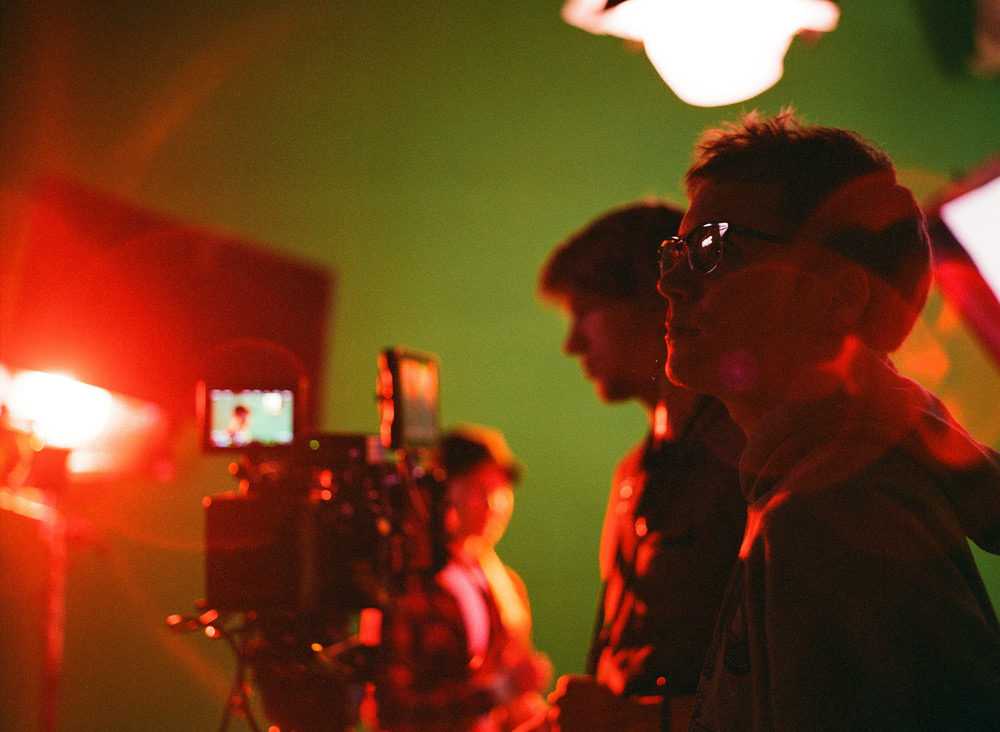
But that’s not always the case. Sometimes, the music comes later—after picture’s locked, or after the structure’s mostly baked in. And that can be tough, because then you have to find something that fits the existing rhythm while still elevating the story.
RELATED READS: How Jesse Crowell Blends Motion, Sound, and Language to Share Powerful Stories
I’m actually in the middle of a project right now that’s very New York-based, and the client is asking for a track that “feels like New York.”
It’s one of those notes that seems simple, but is actually super complex. Because what is the sound of New York? It’s a city with a million sounds—gritty jazz, ambient noise, punk, indie, Latin beats, you name it.
But for me, my mind immediately went to ‘90s New York hip-hop. That era, that sound—it just is New York to me. It’s also my favorite genre, so maybe I’m biased. But when I saw the visuals and started feeling out the cut, it just felt right.
The rhythm, the soul, the swagger—it grounded everything in a really specific place and time without having to over-explain it.
Ultimately, the final decision is based on alignment—when the visuals and the music start talking to each other instead of competing.
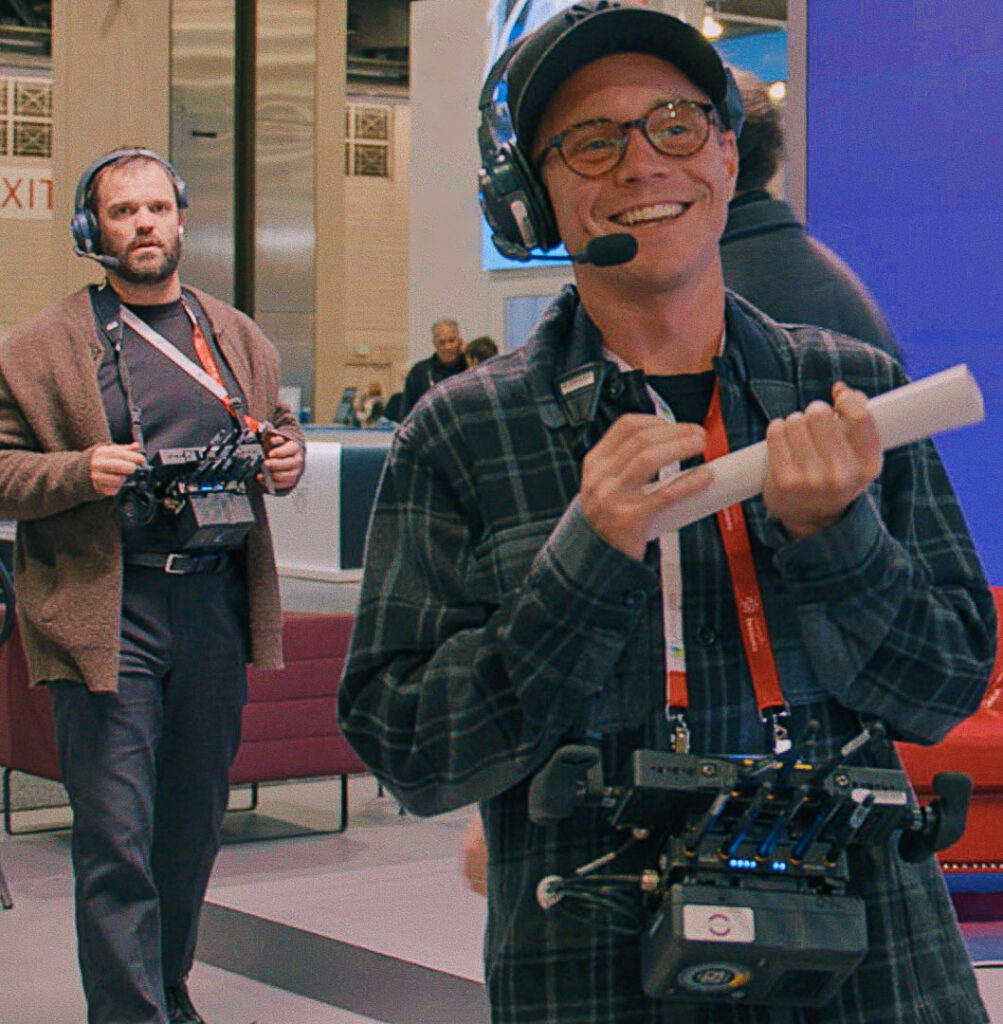
Has your approach to using music evolved over the years? If so, how?
Al Benoit: When I was just starting out, especially in film school, music was all about vibe. I’d pick tracks that I thought were cool or emotionally resonant, but I wasn’t really thinking about how music could support story in a deeper, more structural way. It was more about mood than meaning.
But over time, especially working in the commercial space and collaborating with different brands and clients, I started to see music less as a finishing touch and more as a narrative tool. Something that could shape the pacing, guide the emotional arc, and even elevate performance.
RELATED READS: The Music That Moves the Cut: How the Score from “Severance” Uses Music to Shape Emotion
I became more patient with it. More intentional. Instead of throwing in a track and hoping it clicks, I spend more time now asking, What’s this piece actually trying to say?, and then finding something that serves that tonally, emotionally, and rhythmically.
I’ve learned how much a subtle tonal shift, a percussive hit, or even a breath in the music can completely change how a moment lands. I listen differently now—less for what I like and more for what fits the story.
Besides music, what other techniques do you use to enhance the emotional impact of your storytelling?
Al Benoit: For me, emotional impact lives in the small stuff. In the subtle things. In the way someone exhales before saying something hard. A glance that lingers just a beat too long. A pause in a conversation that tells you more than the words ever could.
That’s where the real emotion lives, so I’m always looking for moments where I can slow things down, sit with something, and feel out what’s really happening underneath.
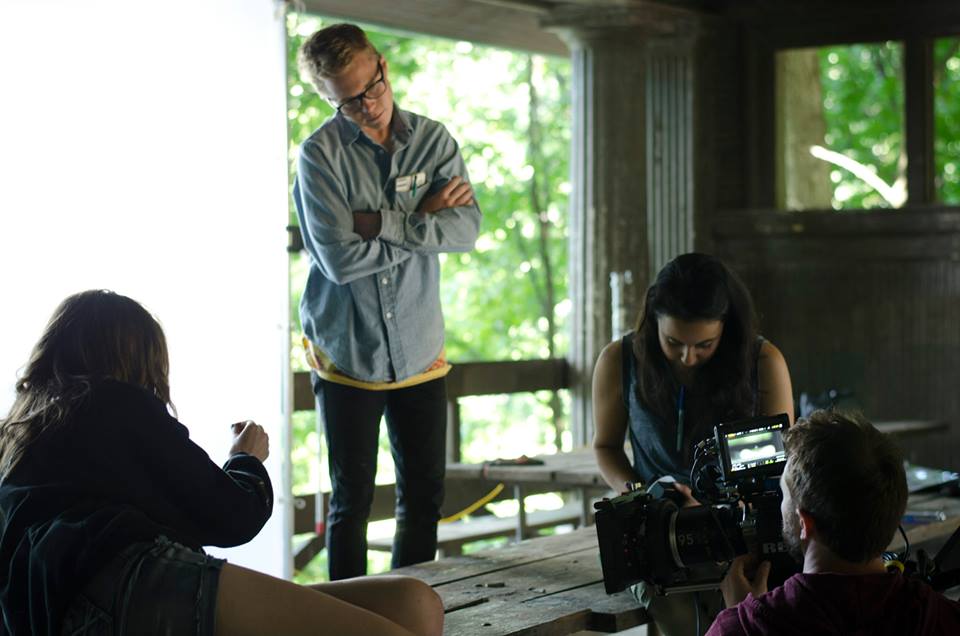
I try to create space for those moments to happen naturally. I try not to over-block or over-rehearse because I want to give the actors and the scene just enough structure so it doesn’t fall apart. But I also want to give them enough looseness and freedom so something unexpected can happen.
Once it does, I want to have the awareness to catch it. Because that’s often where the good stuff lives—in the in-between, in the mistakes, in the stuff you didn’t plan.
I also think pacing is huge. I don’t like to rush. Sometimes holding on a frame longer than you’re “supposed to” is the most emotional choice.
Sometimes cutting away quickly leaves more impact. It’s just about paying attention to what the moment needs. You can’t always follow a formula. Every scene has its own internal rhythm, and I try to follow that.
What’s something you’ve seen lately where the music really elevated the storytelling? Or is there something you saw where the music hurt the storytelling?
Al Benoit: One film that’s really stuck with me when it comes to the use of music is the indie film Darling (2015), directed by Mickey Keating and scored by Giona Ostinelli. I think about it often, especially when I’m working on projects where sound needs to carry tension, psychology, and tone.
And that’s exactly what this score does.
RELATED READS: 10 Iconic Film Soundtracks and What Made Them Great
From the opening cue, with “NYC, Pt. 1,” you know you’re in for something different. It starts with this strange, almost alien vibration, like a frequency you’re not supposed to hear.
And then, right when you’re settling into that, the next track, “Darling,” starts with a soft, delicate piano melody.
But underneath it, you can feel something starting to twist. It’s like the score is having a quiet mental breakdown right in front of you—like there’s a second, darker track bleeding in from another dimension.
That duality between beauty and unease, structure and chaos, is what makes it so haunting.
From what I’ve read about it, Ostinelli used all kinds of unconventional instruments and techniques—recordings of electricity from transmission towers, reversed piano, a waterphone that he distorted and warped until it sounded like the house itself was breathing.
He even used a rare ondes Martenot, which he ran through Marshall amps and mangled with reverb and delay.
These weren’t just cool sounds for the sake of being cool—they gave characters and even the setting a voice. The house in Darling doesn’t just sit in the background—it looms, it howls, it speaks. And you feel that because of the score.
What I love most is that the music doesn’t just “support” the film—it’s essential to it. The sound design and the music are so closely intertwined that they become one.
It’s immersive, psychological, and honestly kind of terrifying—but in the best way. It’s not just about what you’re hearing—it’s what you’re feeling in your body.
Which filmmakers, music supervisors, or campaigns do you think are using music exceptionally well right now?
Al Benoit: One filmmaker I really love is David Robert Mitchell and his ongoing collaboration with Disasterpeace—especially their work on Under The Silver Lake.
Another standout for me is Jen Malone and Fam Udeorji, the brilliant music supervisors behind Atlanta. Both use music in a way that feels deeply woven into the fabric of their storytelling—emotionally, thematically, and even structurally.
Under the Silver Lake is such a singular, strange, fascinating film, and I genuinely think it’ll go down as a cult classic.
The score, composed by Disasterpeace, is like this love letter to old Hollywood noir, but warped through a modern lens. It’s sweeping, haunting, and romantic in a way that feels deeply ironic and sincere at the same time.
And then there’s Atlanta—one of my favorite shows of the last decade. What music supervisors Jen Malone and Fam Udeorji pulled off over four seasons is nothing short of genius. The music in Atlanta doesn’t just set the tone—it is the tone.
Every needle drop feels like it’s saying something that the dialogue isn’t. There’s a sense of place, of identity, of memory. Whether it’s a super-specific Atlanta rap track or a soulful deep cut you haven’t heard in years, the music always feels lived-in.
I always go back to that moment when Al and Darius are waiting to make a drug deal, and they’re casually singing along to Cheryl Lynn’s “Encore.” It’s not what you expect, but it tells you something about who they are and where they come from.
And that’s what excites me most about great music supervision: it’s not about just finding a cool track, it’s about finding the track that tells you something deeper.
What current music trends in commercial filmmaking are you most excited about?
Al Benoit: There’s a lot happening in the commercial music world right now. Music’s role in branded work is evolving fast. It’s being shaped by everything from TikTok and streaming platforms to shortened attention spans and a growing desire for authenticity.
One of the big things I’ve noticed is how fractured and diverse music tastes have become across demographics. But now it seems like there’s more of an effort to really speak to someone, not everyone. And I think that’s a good thing.
RELATED READS: Why Hustle Media Turned to Musicbed for Their TikTok Docuseries, “Young Bloods”
There’s also a growing need for music that can adapt across platforms and formats. Music in commercials used to follow a more traditional arc. You had a longer runway to build mood, tell a story, and land the emotion.
But now, with shorter formats, you have to craft micro-moments—flashes of feeling that have to land immediately.
What advice would you give to emerging filmmakers about using music more effectively in their work?
Al Benoit: Don’t treat music like an afterthought. Start thinking about it early—not necessarily in a technical way, but emotionally. What should your project feel like? Which kind of atmosphere are you trying to create? What emotional residue do you want the audience to walk away with?
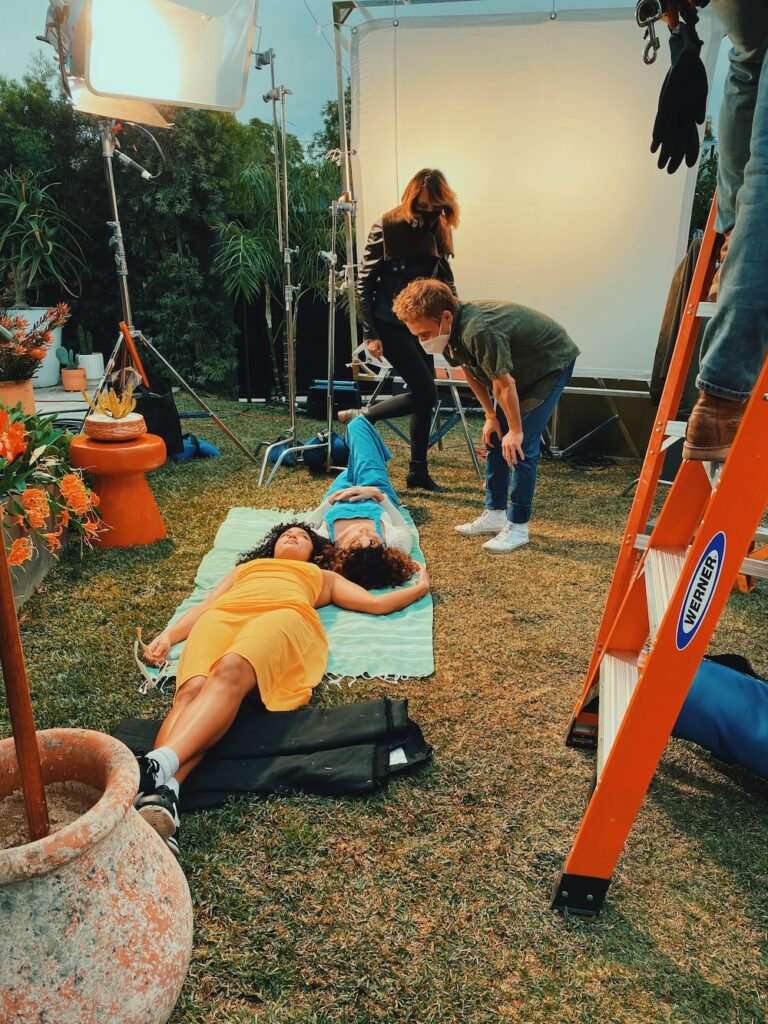
Even if you don’t know the exact track yet, start building a musical palette. Make a playlist. Think about the world of your story—or brand—and what kind of sounds live there.
I’d also say not to use music solely to tell people how to feel. That’s a trap. Use it to expand the emotional landscape, not hammer it in.
Sometimes a scene or spot hits harder when the music plays against the action, not directly with it. Let the audience come to the feeling themselves—it’ll stick with them longer.
And if you’re editing your own work, try cutting without temp for a bit. Live in the silence. It’ll force you to focus on rhythm, performance, and pacing. Then when you finally add music, it feels earned. That contrast can be really powerful.
Lastly, stay curious. Watch and listen widely. Study how music is used in things you love, as well as in things you don’t. Ask yourself why it works—or why it doesn’t.
You don’t need the biggest track or most recognizable artist. You just need something honest. Something that fits your project.
RELATED READS: How to Find the Perfect Song to Pitch to Your Client
What about Musicbed stands out to you? Why would you recommend Musicbed as a resource for editors and filmmakers?
Al Benoit: Musicbed just feels so elevated compared to a lot of the other stock music sites out there. Especially in the commercial world, you’re often on tight turnarounds, trying to find something that doesn’t sound like, well… stock. And Musicbed has songs that actually feel like real music.
There’s texture, there’s tone, there’s some soul in it.
I also really appreciate that if you’re in a pinch, you can contact one of their supervisors, and they’ll put together a curated playlist for you. That’s been a huge help a couple of times.
I was working on a project for Fiat recently—a really fun, high-energy spot—and we needed something punchy and unexpected to bring it to life. We’d been searching around for a while, but we didn’t really find anything that clicked.
Then we came across this track on Musicbed called “Future Looks Like Wow” by lunaluxe.
And the second we dropped it in, the edit just kind of lit up. Everything snapped into place. That’s the kind of moment you’re always chasing when you’re working with music—and when it happens, it feels like magic.
Solid library, great interface, real music made by real artists. What more do you want?
RELATED READS: Notes on Authenticity from Musicbed’s VP of A&R
The Go-To Music of Al Benoit
Explore a curated playlist from Al Benoit — all available to license only on Musicbed.
